Blog Topics
Woodpeckers are known for their distinct hammering sound, heard when they use their bills like an axe or pick to drill holes in trees, fences, houses, or other objects.
While these birds get a bad reputation for ruining trees, what they are actually doing is pointing to a larger issue.
If you noticed woodpecker damage to your trees (or maybe you even heard the distinctive sound!), keep reading to learn the causes of woodpecker damage, what you should do, information about woodpeckers in Virginia, and more!
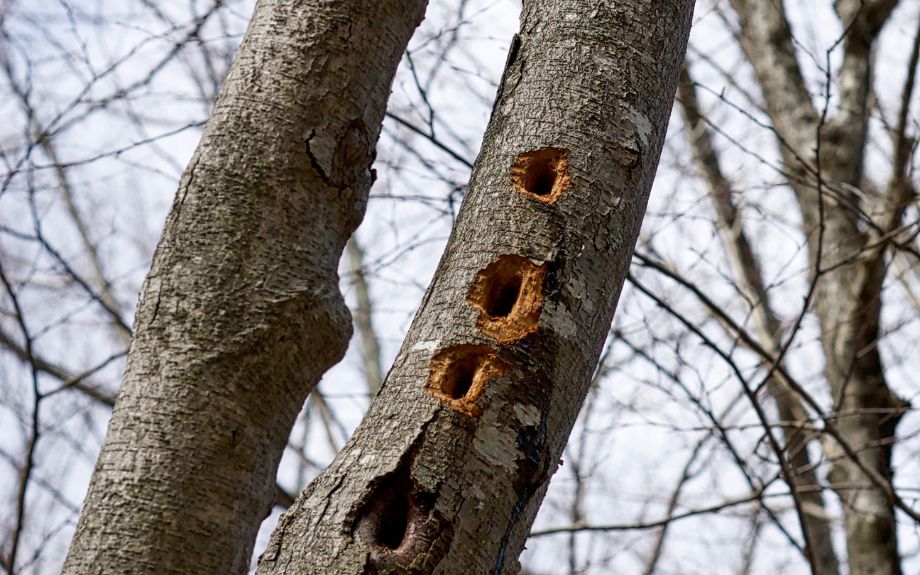
Why Do Woodpeckers Create Holes?
If a woodpecker is hitting your tree or house, there are three potential reasons: it is looking for food, it is trying to appear attractive or dominant, or it is building a nest.
Woodpeckers Create Holes to Search for Food
Most of the time, a woodpecker uses its unique drilling capabilities to reach the insects that are already inside your tree, which it views as food.
Insect larvae and bugs caught in tree sap are both vital food sources for woodpeckers.
It varies based on the woodpecker species and the food available, but woodpeckers have been known to eat:
- Ants
- Termites
- Beetles
- Spiders
- Bird eggs
- Caterpillars
- Small rodents
- Lizards
- Fruit
- Nuts
- Tree sap
- Berries
- Seeds
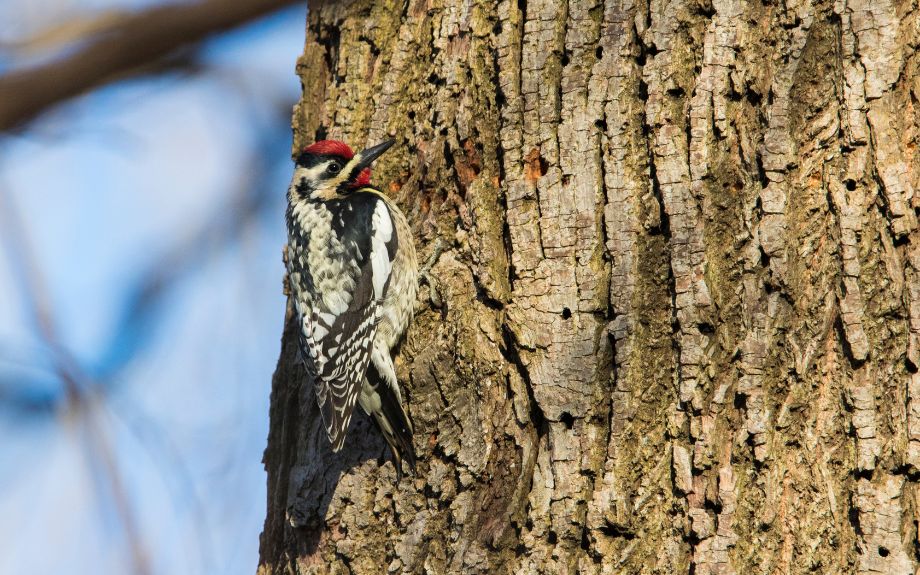
Woodpeckers Create Noise to Attract Mates
But what about when woodpeckers are creating noise on something that doesn’t contain a food source, such as rain gutters?
Well, one other reason that woodpeckers create noise is to attract a mate or to establish their territory.
During the spring, both male and female woodpeckers will “drum” on resonant objects (such as metal pipes, rain gutters, or even a dead tree branch) to communicate. Most often, this communication is to summon a mate or to declare that area as their territory. You may hear this drumming in the early hours of the morning.
Note: Wooden house siding, one of the other popular materials that woodpeckers destroy, CAN contain insects.
Woodpeckers Create Large Holes for Nesting
Woodpeckers will also drill into trees in the spring to create nests. These holes are larger than the holes used to find insects.
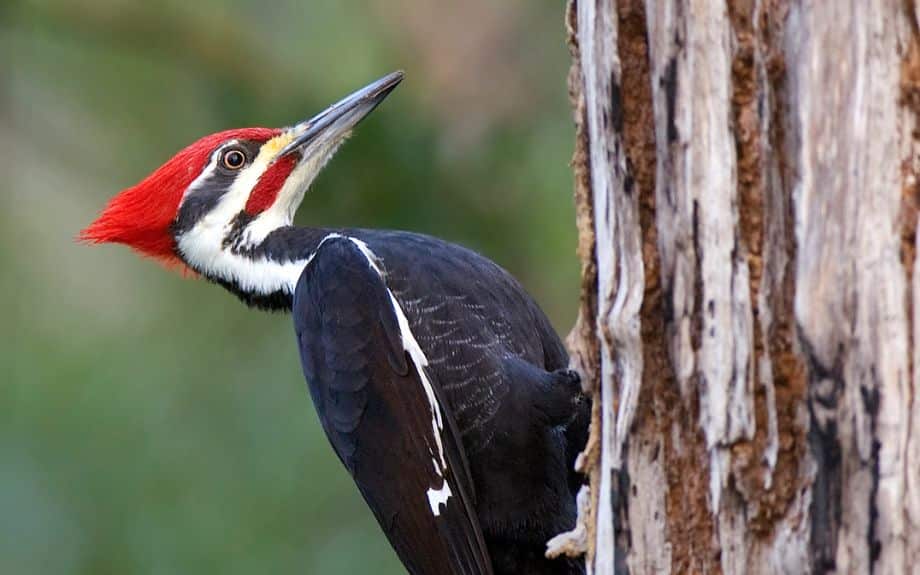
What Can you Do to Prevent Woodpecker Damage to Trees?
Now that you know that woodpecker damage is a symptom of a larger issue, you know that the main issue needs to be addressed: tree insect pests.
How to Prevent Woodpecker Damage
There are several options for preventing woodpecker damage to your trees.
Treat the Main Issue
Woodpeckers are helpful to Virginia property owners in that they are a good pest-detection tool. If you notice woodpecker holes in your tree, chances are high that some kind of insect has made its way inside your tree.
If the pest issue is treated and resolved, the woodpecker will no longer have a food source that it needs to reach through drilling holes, and the damage should stop.
Contact Riverbend Landscapes and Tree Service to determine what insect is infesting your trees.
We can help you determine the best method to eradicate the pest and return your tree to a healthy state.
Learn more about our tree health management options >>
Use Deterrents
There are various methods used to deter woodpeckers from their noisemaking efforts.
- Use a fake owl or snake (predators of woodpeckers) but make sure to move them often
- Create noise (such as banging pots together) when you spot a woodpecker
- Hang metallic ribbon from your tree branches to scare woodpeckers away
Again, these steps are only helpful if the insect problem is also remedied.
Remove the Tree
Woodpecker damage alone will not harm a tree enough to kill it. However, the combination of a pest issue, plus the holes that allow other pests and diseases entry into the tree, can cause enough stress to significantly damage a tree.
Though a very rare solution, you may choose to remove the tree entirely.
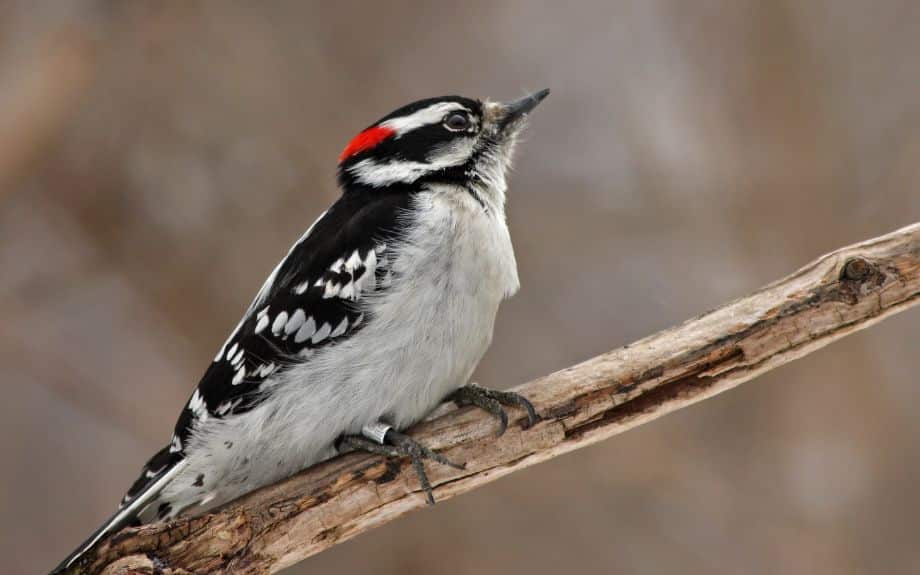
What NOT to do to Prevent Woodpecker Damage
Woodpeckers are protected by state and federal laws, so there are certain things that you should never do to prevent woodpecker damage:
- Don’t trap a woodpecker
- Don’t destroy a woodpecker nest or eggs
- Don’t kill any woodpeckers
- Don’t poison any animals on your property
- Don’t possess, sell, deliver, carry, transport, or ship any woodpecker or woodpecker part (Federal offense)
Learn more about state and federal laws related to woodpeckers on your Virginia property >>
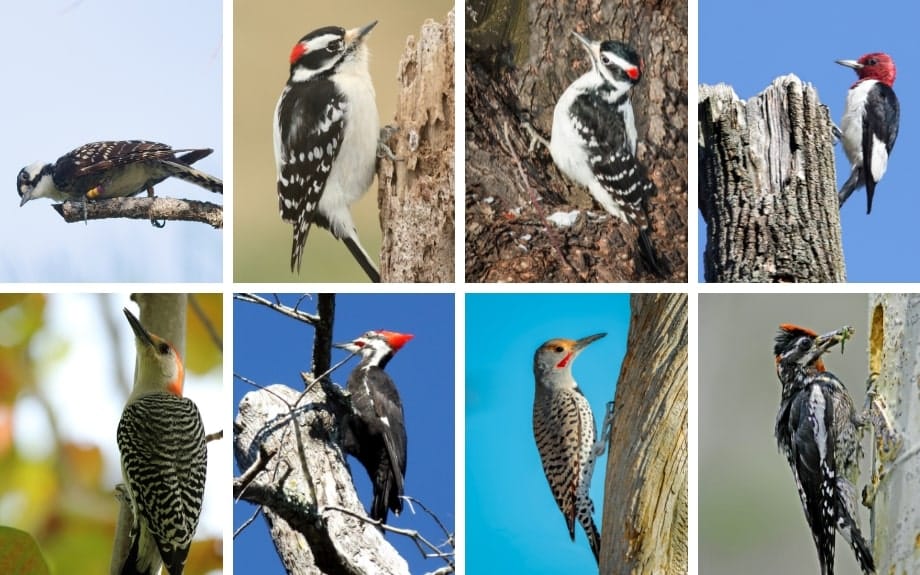
What Types of Woodpeckers are Found in Virginia?
There are eight different types of woodpeckers that can be found throughout Virginia.
- Red-cockaded Woodpecker (Picoides borealis) – Considered a federal and state endangered species
- Downy Woodpecker (Picoides pubescens)
- Hairy Woodpecker (Picoides villosus)
- Red-headed Woodpecker (Melanerpes erythrocephalus)
- Red-bellied Woodpecker (Melanerpes carolinus)
- Pileated Woodpecker (Dryocopus pileatus)
- Northern Flicker (Colaptes auratus)
- Yellow-bellied Sapsucker (Sphyrapicus varius)
Learn more (and hear the chirps!) of all 8 types of woodpeckers found in Virginia >>
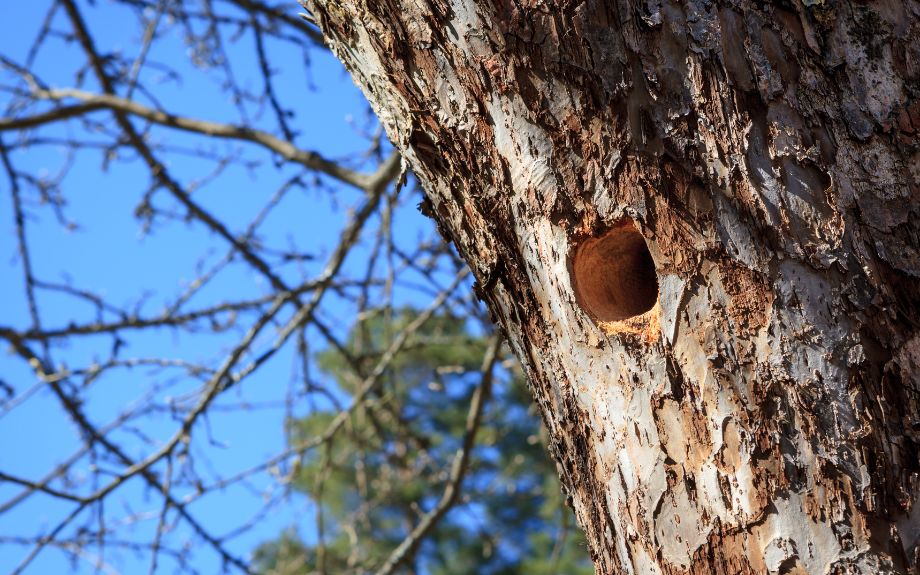
What Trees Are Woodpeckers Most Likely to Drill Into?
Woodpeckers prefer trees with softer wood but will drill into almost any tree that contains insect pests. Dead or dying trees are their preference for nesting areas.
Here in Virginia, they are most likely to drill into:
- Pine
- Spruce
- Birch
- Fruit Trees
- Sweet Gum
Woodpeckers will look for the entry point the insects used to get into the tree and will use their beaks to tap the tree, looking for hollow areas. The hollow spots are where the insect larvae are most likely to be hiding.
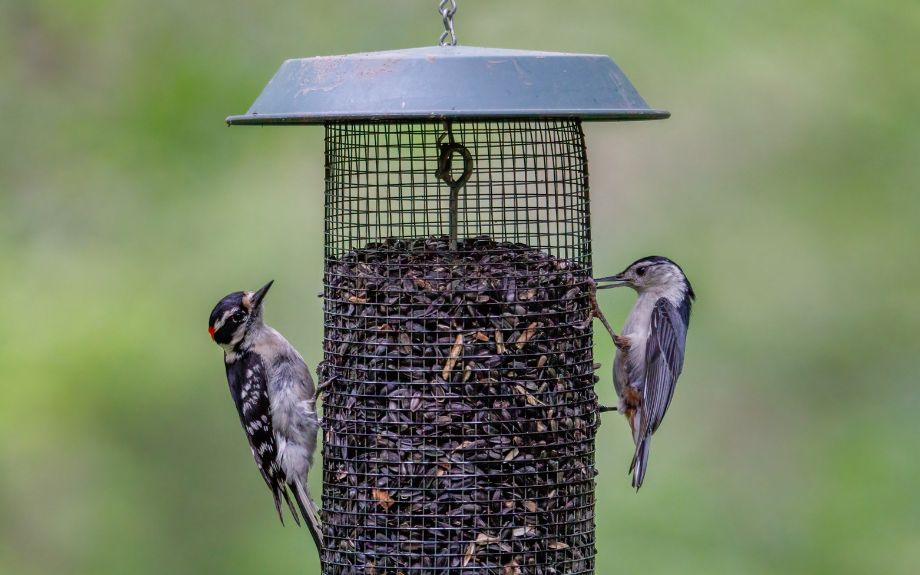
Woodpeckers Can Be Beneficial
It is ironic that a bird that is mostly seen as annoying (thanks to its continual knocking) is actually beneficial for Virginia homeowners.
Woodpeckers not only point to insect infestations, but they are part of removing the insects. In fact, woodpeckers are thought to have helped to slow and control the spread of Emerald Ash Borer (EAB) in some areas. They are also being used to help scientists, foresters, and arborists find EAB infestations.
Woodpeckers are often found in forested areas after a fire, seeking out any pests that are hidden beneath the charred bark.
Some types of woodpeckers, such as pileated woodpeckers, prefer dead wood and fallen logs. Other wildlife has been known to rely on the larger holes that pileated woodpeckers make for shelter or nests.
Sapsuckers, true to their name, rely on the sap of trees as a food source. Hummingbirds often drink sap made available to them from a sapsucker’s holes.
Despite their loud drilling or drumming, woodpeckers are helpful for your yard and for the ecosystem, and many Virginia homeowners look for ways to entice woodpeckers to their yards using suet feeders, birdbaths, and native plants and trees that grow berries.
Contact Riverbend Landscapes and Tree Service for More Information
If you suspect woodpecker damage to your trees, contact Riverbend Landscapes and Tree Service to schedule a tree health consultation.
We can also help with tree pest issues, tree pruning, tree removal, or other tree care services.
Give Us a Call at 703-402-9366
If you'd like help with your trees or landscape, have any questions, or would like to schedule an appointment with one of our Certified Arborists, please give us a call. We'd love to hear from you!
